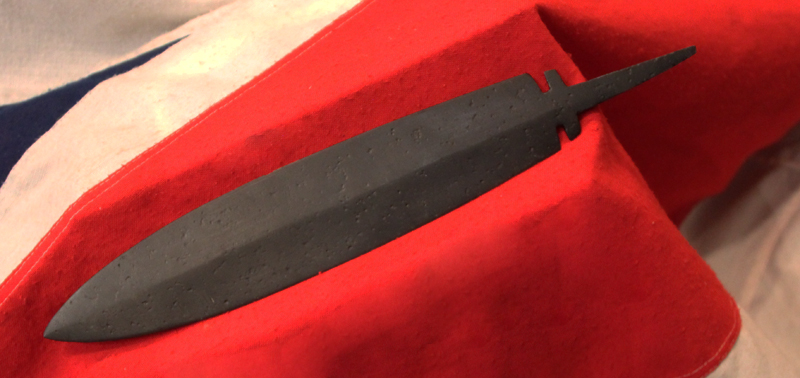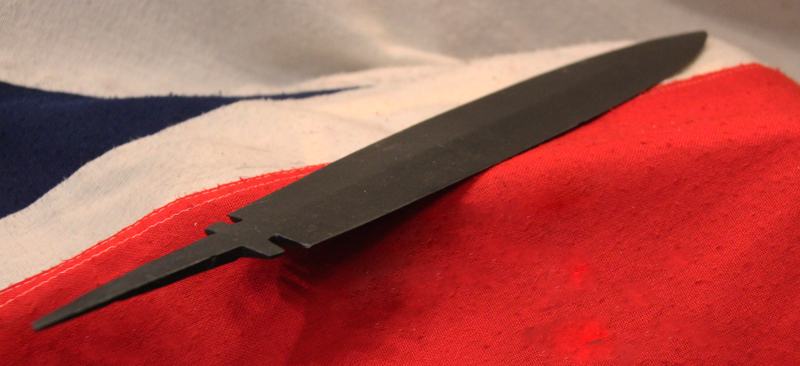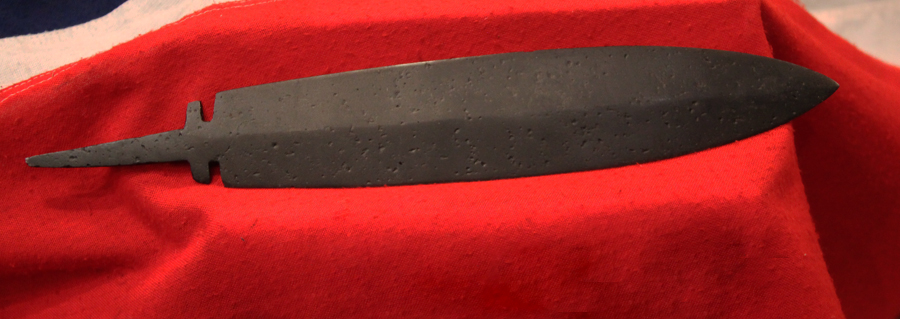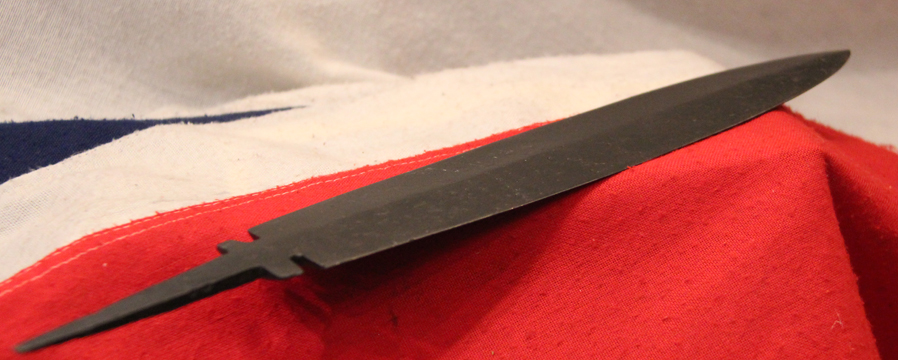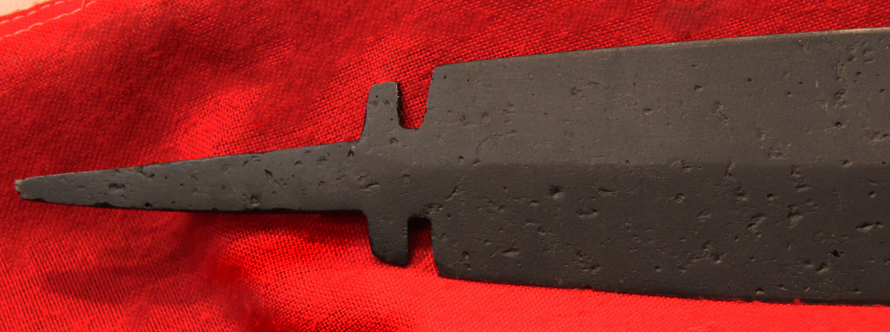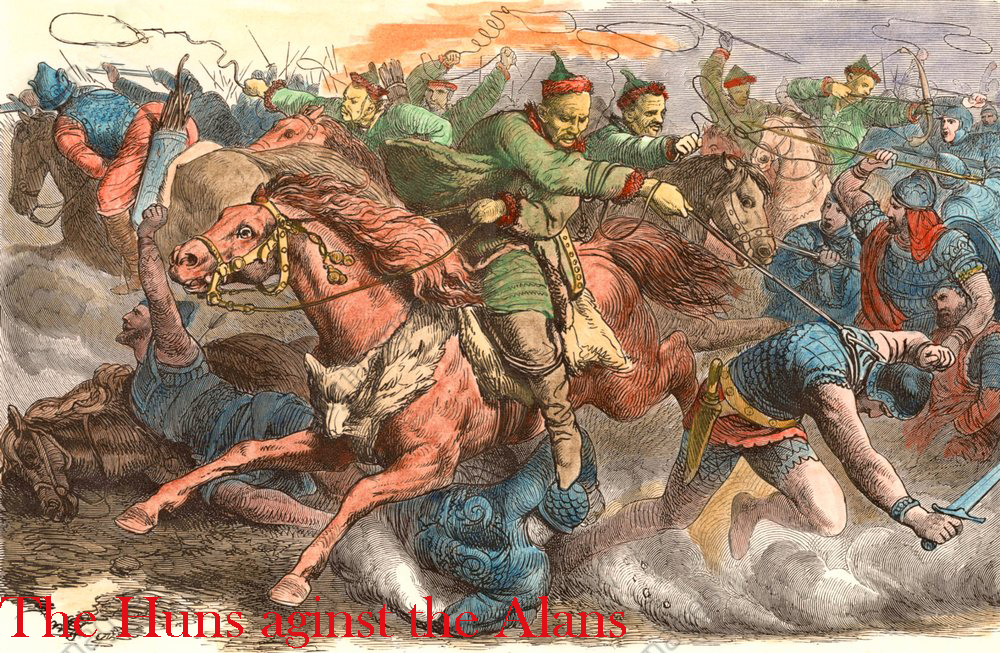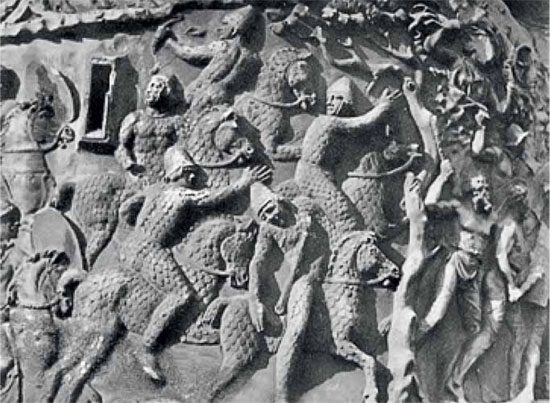A Most Fine Circa 1700 year Old Imperial Roman Vassal Warrior's Dagger Blade, Used Up To and Into The 5th Century AD Including By The Personal Guard of Emperor Gratian.
In superbly preserved condition, just lacking its wooden hilt as usual, due to wood and organic materials never surviving buried for longer that a few hundred years.
The same dagger as used by the personal guard units of Roman Emperor Gratian, who was so impressed by the skills of the Alans in combat, he invited them to be part of his personal guard, and he even went so far in his respect of their prowess in combat as to wear the very same form of armour as they wore.
Used by the warriors known as the 'Alans', they were predecessors of the medieval European knights, and from whence the Christian name Alan, that is still used today, descended from.
The Alans laid the foundation of medieval military tradition in Europe and inspired British mythology.
This is an incredible, original, Alans dagger, known as the a Samartian, blade, in very fine condition, professionally cleaned and superbly conserved.
The Alan guards combat dagger is highly distinctive, bearing two opposing side cuts at the ricasso before the tang. From the time when the Alan's Samartian warriors fought with the Roman Legions against Attila the Hun, and the Hunic invasion, and the battles of the Catalaunian Fields, that led to the death of Attila.
The Alans pursuit of war, a decent opponent and heroic death was legendary in the ancient times. But how did these tribes end up with such a military role and political impact in the West while so far from their homeland, and most often amongst enemies. Clearly, their number or strength was not the answer.
They conquered the West with their military culture and outstanding discipline. Their cavalry, clad in steel armour and arranged in tight rows, had the best skills of the time. German kings eagerly invited the Alans to serve in their armies, while their own subjects, mostly marching troops, learned horse riding and horse battle from them. The Alans impressed the arrogant Roman nobility so much that Emperor Gratian (359-383) invited them to his guard unit, reformed his cavalry based on their model and wore Alan clothes and armour himself.
Since the Alan society was mostly war-oriented, boys were taught horseback riding from early childhood. According to Marcellinus, Alan warriors considered it offensive for a man to walk. Isidore of Seville noted in the 6th century that they even looked somewhat clumsy without their horses.
The warriors and tribes known as Alans were part of the tribes derived from the word and term of the earlier people known as Aryans, from the old Indo-European-Iranian word Arya. Tall and good-looking with fair hair and menacing looks, the Alans were more warlike than other ethnic groups related to them. Later, their source name, Aryan, was used and abused by notorious effect by Hitler's 3rd Reich in the 20th century, as the basis of the true ancient Germanic peoples. This blade shape is highly distinctive and may well itself inspired the very similar blade shape of the German WW2 SS dagger, as much as the Tudor English Holbein dagger worn by Henry the 8th is said to have inspired the entire SS dagger pattern.
This dagger blade is from the 5th-6th century AD. A two-edged leaf-shaped iron blade, lentoid in section with tapering tang, notch above each shoulder. During the first period, the Alans appear as a nomadic, warlike, pastoral people who were professional warriors and took service, at various times, with the Romans, Parthians, and Sasanians.
Their cavalry was particularly renowned. They participated in Mithridates wars with Rome (chronicled by Lucan), as well as in Roman campaigns in Armenia, Media, and Parthia in the 1st and 2nd centuries A.D. (see Josephus, Jewish Wars 7.244-51, Antiquities 18.97; cf. accounts in Moses of Khoren, History of the Armenians Langlois, Historiens II, pp. 105-06, 125 and the Georgian Chronicle Kartlis tskhovreba, in M. F. Brosset and D. I. Chubinov, Histoire de la Georgie I, St. Petersburg, 1849). Ammianus Marcellinus (31.2) describes the Alans? nomadic economy and warlike customs.
The invasion of the Huns split the Alans into two parts, the European and the Caucasian. Some of the European Alans were drawn into the migration of peoples from eastern into western Europe. With the Germanic tribes of Visigoths and Vandals they passed into Gaul and Spain, some even reaching North Africa. The Alans fought on the side of the Romans in the battle of the Catalaunian Fields (A.D. 451), when Aetius defeated Attila, chief of the Huns. In 461 and 464 they made incursions into Italy. After Attila's death they struggled, together with the Germanic tribes, to free themselves from Hun domination. Large Alan hordes settled along the middle course of the Loire in Gaul under King Sangiban and on the lower Danube with King Candac (the historian Jordanes sprang from the latter group). Another settlement is indicated by the name of the Spanish province Catalonia, which is but a slight deformation of Goth-Alania, provine of the Goths and Alans. The French proper name Alain and English Alan are an inheritance from the tribe. The Alans also left an imprint on Celtic folk-poetry, e.g., the cycle of legends concerning King Arthur and his knights of the Round Table (see M. Hesse, Iranisches Sagengut im Christlichen Epos, Atlantis 1937, pp. 621-28; J. H. Grisward, The motif of the sword thrown into the lake : The death of Arthur and the death of Batradz, Romania 90, 1969, pp. 289-340). Part of the European Alans remained in the lands bordering the Black Sea, including the Crimea. Gratian, Emperor Flavius Gratianus; 18 April 359 – 25 August 383) was emperor of the western part of the Roman Empire from 367 to 383. The eldest son of Valentinian I, Gratian accompanied his father on several campaigns along the Rhine and Danube frontiers and was raised to the rank of Augustus in 367. Upon the death of Valentinian in 375, Gratian took over government of the west while his half-brother Valentinian II was also acclaimed emperor in Pannonia. Gratian governed the western provinces of the empire, while his uncle Valens was already the emperor over the east.
Gratian subsequently led a campaign across the Rhine, attacked the Lentienses, and forced the tribe to surrender. That same year, the eastern emperor Valens was killed fighting the Goths at the Battle of Adrianople, which led to Gratian elevating Theodosius to replace him in 379. Gratian favoured Nicene Christianity over traditional Roman religion, issuing the Edict of Thessalonica, refusing the office of pontifex maximus, and removing the Altar of Victory from the Roman Senate's Curia Julia. The city of Cularo on the Isère river in Roman Gaul was renamed Latin: Gratianopolis after him, which later evolved to Grenoble.
Hilts of Roman era swords and daggers effectively, are almost non existent, as they were made of organic materials, such as wood, horn etc. which rarely survives on edged weapons more than 400 to 500 years or so.
Code: 22083
995.00 GBP

